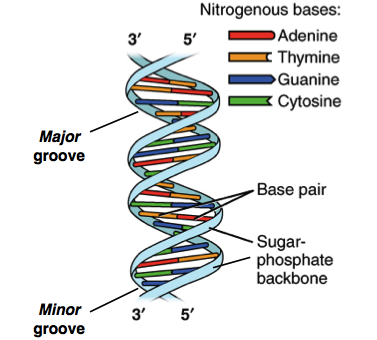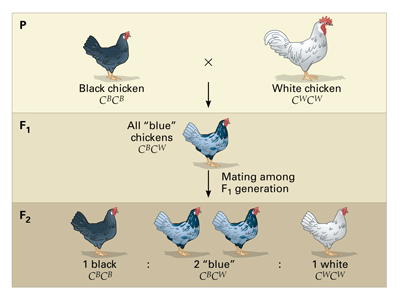Knowledge of the gene and some of its functions are necessary to obtain a good foundation in the principles of animal breeding. The gene is the smallest biological unit of inheritance and is carried, as was mentioned already, on the chromosome. Hundreds and possibly thousands of genes are carried on each chromosome.
The chemical composition of the gene has been studied indirectly by the chemical analysis of the chromosomes. It was found that chromosomes contain proteins and nucleic acids. Two kinds of nucleic acids occur in cells, namely DNA and RNA. DNA (deoxyribonucleic acid) is the primary genetic material and the gene is a segment of a DNA molecule.
Electron microscope pictures show that the DNA molecule is longish and rather stiff, like a piece of cord. X-ray analysis shows that it is a double molecule or chain with one chain wrapped around the other in a helical structure. The two chains are connected at various points.
Our knowledge on the structure of the DNA molecule is mainly due to the work of two brilliant scientists, namely an American, Watson and an Englishman, Crick. While working at the University of Cambridge in 1953 they put forward a new idea for the structure of the DNA molecule. It is known as the Watson – Crick Model and up to now, it is still the model that fit the fact most closely.

This model shows the DNA molecule as a double spiral consisting of similar molecules held together in a special way. One can think of it as a twisted ladder in which the two uprights consist of alternating phosphate and sugar groups, held together by strong chemical bonds. The rungs, which hold the uprights together, are attached to the sugar groups. These rungs may consist of any pair of a wide range of different combinations of nitrogen bases, which are called purines and pyrimidines. Weak chemical forces, hydrogen bonds, between matching bases of the two chains hold the molecule together. In the figure, the structure of DNA is presented according to the Watson – Crick Model.
If we imagine the strands of the spiral unwound and the whole structure flattened out, it would look somewhat like this.

Where A, T, G and C etc. Are the nitrogen bases (purines and pyrimidine).
Figure – Representation of the double helix set upon a flat surface.
The next figure illustrates the inheritance of a single gene responsible for the plumage colour of Andalusian fowls.
Crosses between black and white fowls produce only blue-grey offspring in the F1 generation. When the F1 offspring are mated with each other, the F2 generation they produce will have: 25% black, (which breeds true); 50% blue-grey, (which breeds like the F1 offspring), and 25% white (which breeds true) coloured plumage.

Click here to view a video that explains the discovery of the structure of DNA.